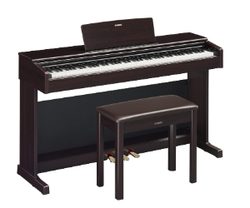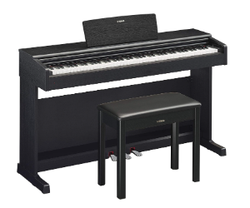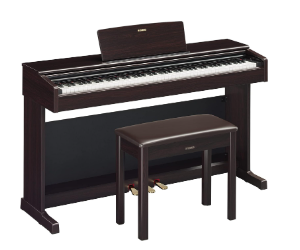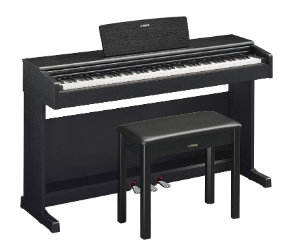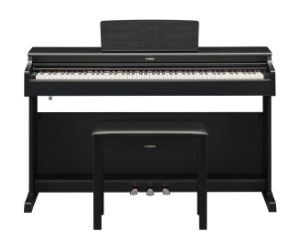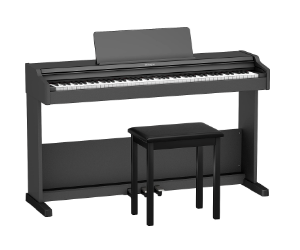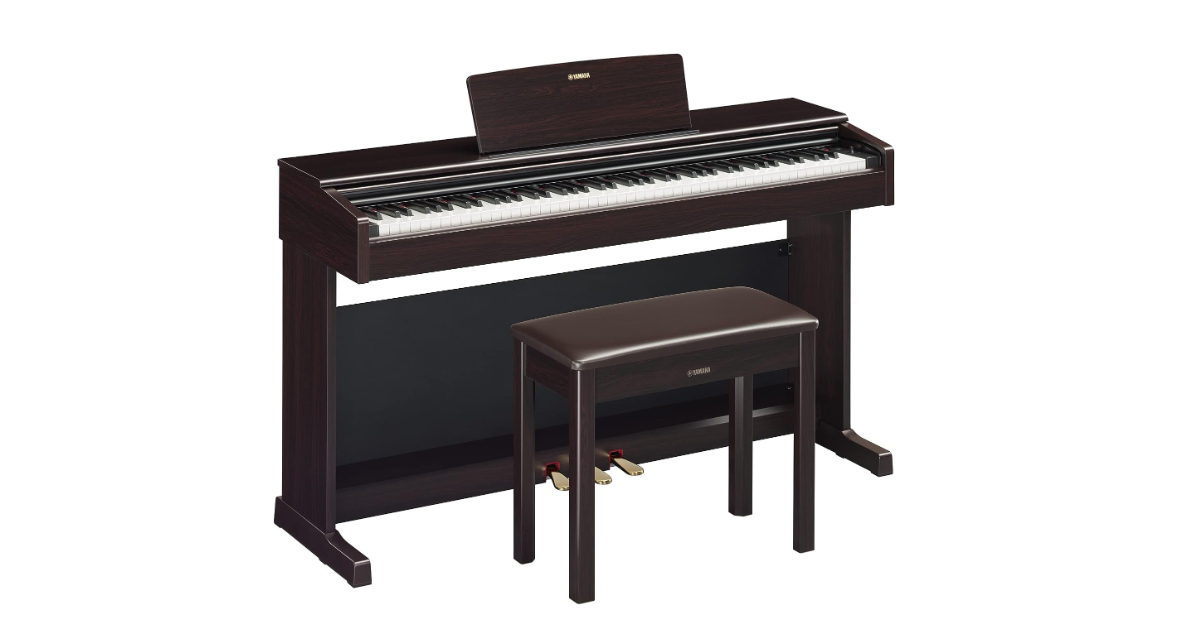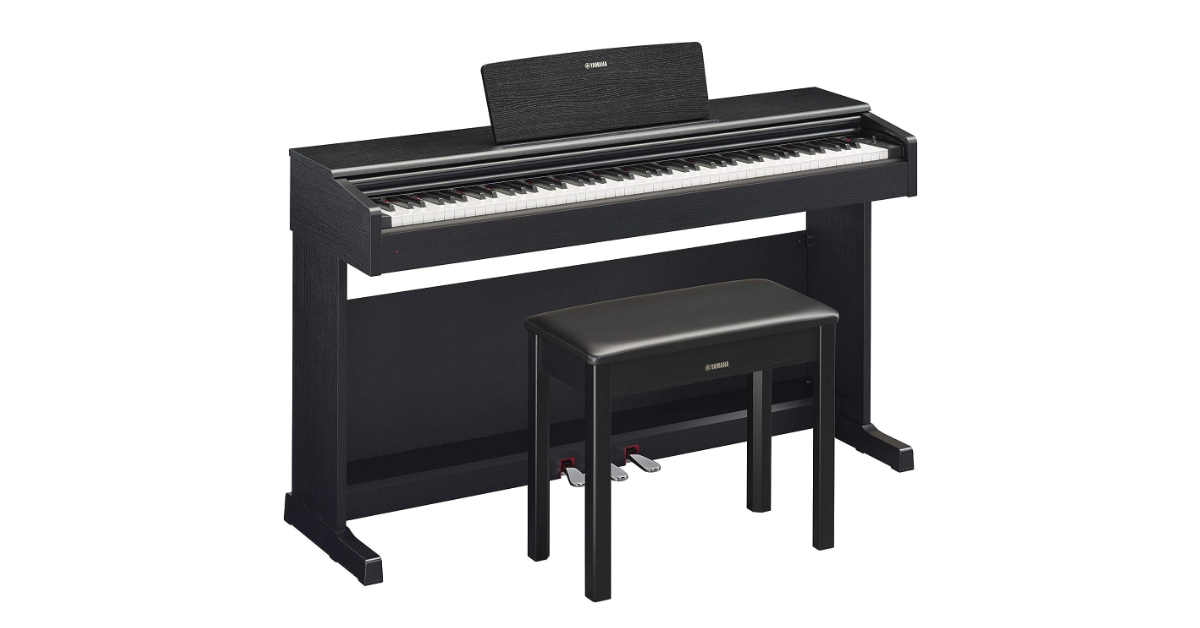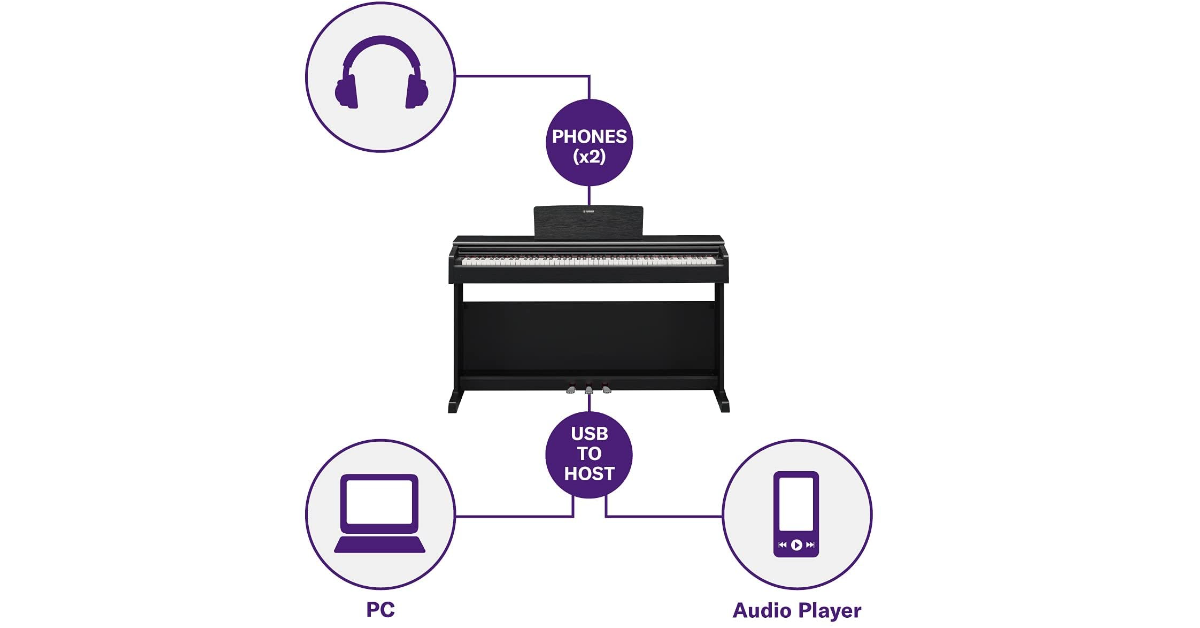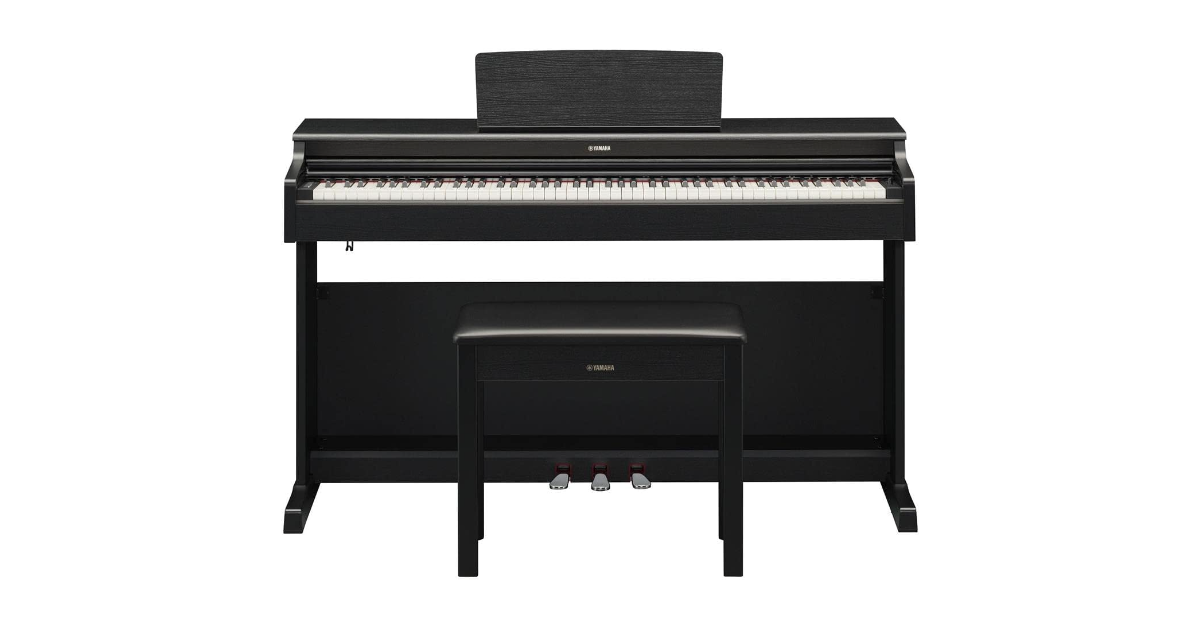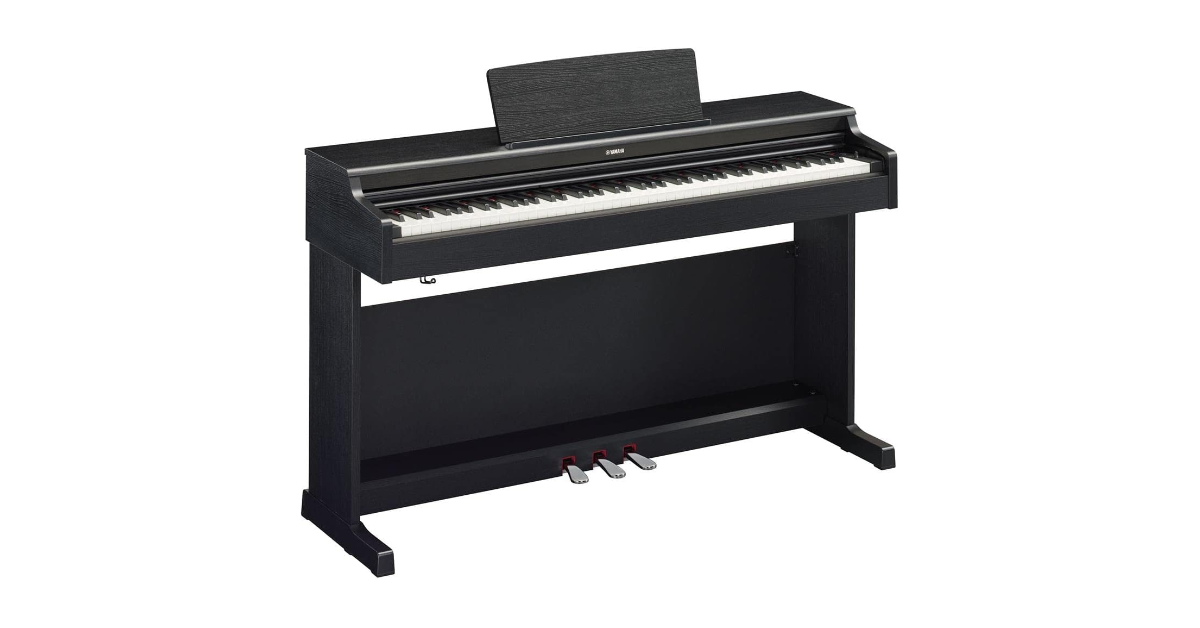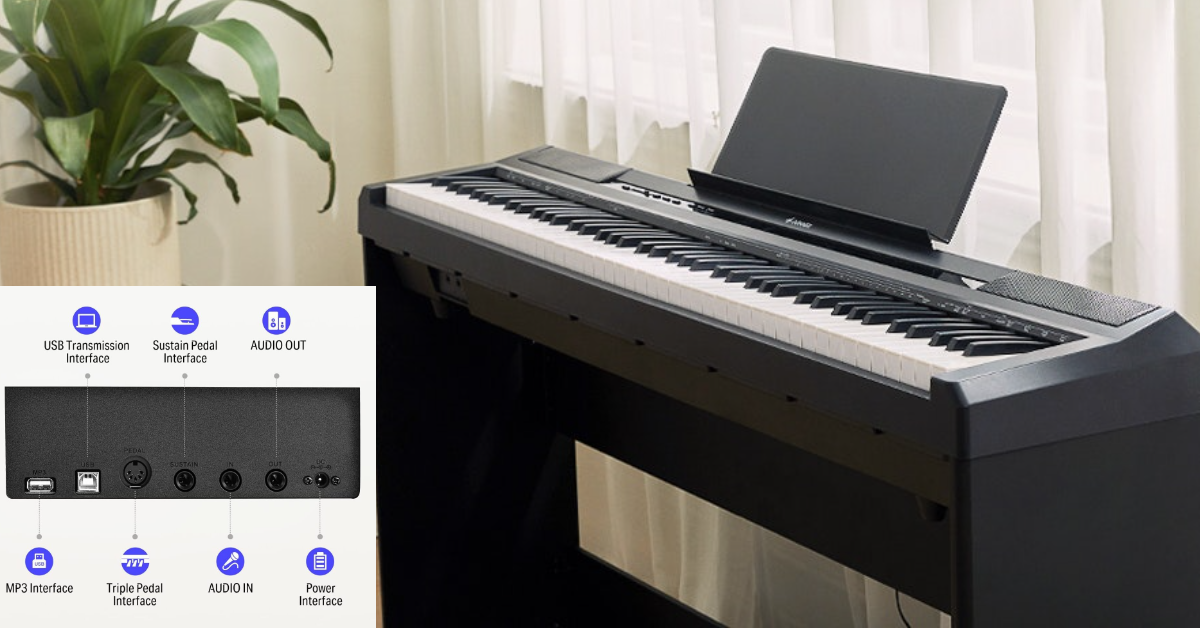Best Digital Piano for Classical Pianists
The allure of classical music lies in its timeless notes and the finesse with which it's played. For the seasoned maestro or the budding virtuoso, finding the best digital piano for classical pianists 2025 can be the key to transcending into a symphonic realm. Let’s dive into the digital realm of classical harmonies.
If you're short on time and looking for the best digital piano for classical pianists, here's my top picks.
We may earn a small commission if you buy via our links - it helps keep gagadget.com running.
Table of contents:
- Best Digital Piano for Classical Pianists- Buyer's Guide
- Best Digital Pianos for Pianists: TOP 5
- Best Digital Piano for Classical Pianists: Comparison
- Yamaha YDP 145 Digital Piano
- Yamaha YDP144B Digital Piano
- Yamaha YDP-165 Digital Piano
- Donner DEP-10 Digital Piano
- Roland RP107 Digital Piano
- FAQ about Best Digital Piano for Classical Pianists
- Best Digital Piano for Classical Pianists: Conclusion
Best Digital Piano for Classical Pianists - Buyer’s Guide
Drawing from my experience choosing the best digital piano for classical music isn't simply about finding the one with the most features or the best price. The intricate nature of classical compositions necessitates a keen ear for authentic sound, touch sensitivity, and an array of features that mimic the grandeur of a traditional piano. So, what should you keep an eye on when selecting the best digital piano for an advanced pianist?
1. Sound Quality: Look for digital pianos that boast high-quality sound samples from grand pianos. The best electric piano for classical music will often use multi-layered sampling to replicate the nuances of acoustic pianos.
2. Touch Sensitivity: A digital piano for classical music should have weighted keys that replicate the feel of an acoustic piano. The graded hammer action mimics the heavier feel in the bass notes and the lighter feel in the higher tones.
3. Polyphony: Higher polyphony numbers allow more notes to be played simultaneously, crucial for complex classical compositions. For example, Yamaha YDP 145 with 192 Polyphony or Roland RP107 with 256 Polyphony.
4. Connectivity: Consider USB ports, Bluetooth capability, and MIDI compatibility. This is essential for those looking to connect their instrument to recording software or external devices.
5. Portability: If mobility is crucial, the best portable digital piano for classical pianists will be lightweight yet sturdy, ensuring you can take your music wherever you go.
6. Pedal Response: A responsive pedal system is a must-have, especially for those pieces that demand sustained notes or require delicate pedal work.
7. Additional Features: Some pianos come with added features like built-in metronomes, lesson modes, or recording capabilities. These can be beneficial depending on the pianist's needs.
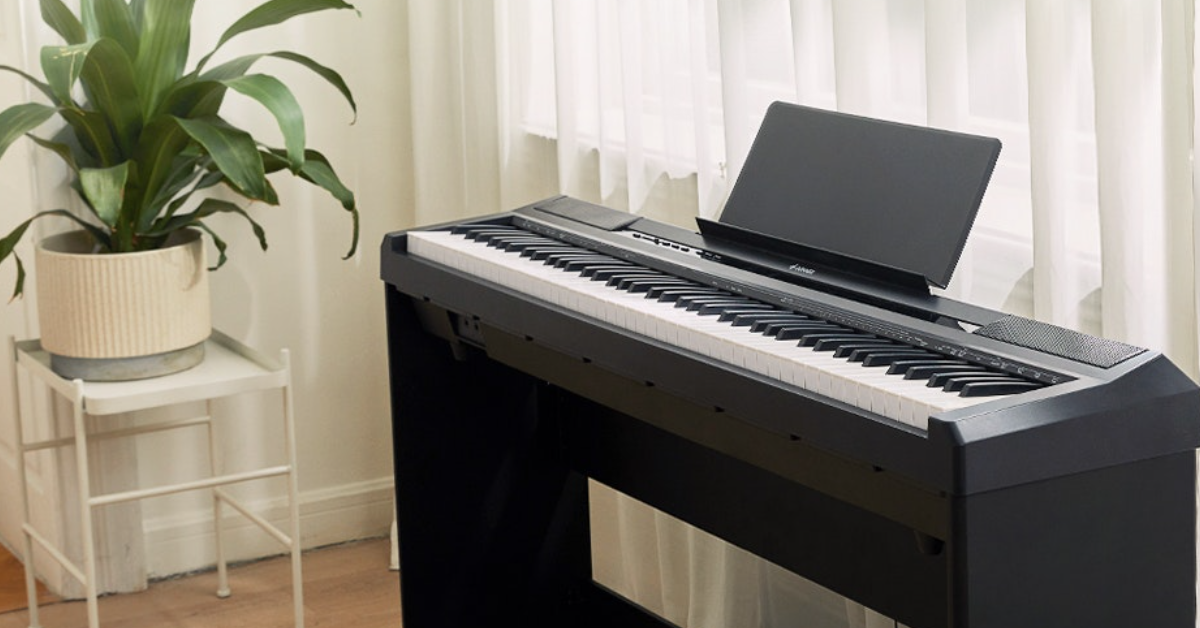
Best Digital Pianos for Pianists - TOP 5
Dive into a curated list of the best digital pianos tailored for those with a passion for classical music.
- CFX Premium Grand Piano Voice
- GHS Weighted Action
- VRM Lite Technology
- CFX Premium Grand Piano Voice
- GHS Weighted Action
- USB to HOST Connection, Virtual Resonance Modeling (VRM)
- Graded Hammer 3 (GH3) technology
- CFX Stereo Sampling
- VRM Lite Technology
- MIDI Connectivity
- Superior Sound System
- Recording
- SuperNATURAL Piano Technology
- User-Friendly Interface
- Impressive Polyphony, Quality Sound System
Best Digital Piano for Classical Pianists: Comparison
Discover the essence of each chosen digital piano, revealing why they are revered by classical pianists.
| Model | Polyphony | Number of Voices | Special Features |
|---|---|---|---|
| Yamaha YDP 145 | 192 | 10 | CFX Premium Grand Piano Voice, GHS weighted action, 3 Piano Style Pedals, Tone Escapement, VRM Lite tech |
| Yamaha YDP144B | 192 | 10 | CFX Premium Grand Piano Voice, GHS weighted action, Half-damper pedal control, Moisture-absorbing matte black key tops |
| Yamaha YDP-165 | 192 | 10 | Graded Hammer 3, CFX Stereo Sampling, 3 Piano Style Pedals, Tone Escapement, VRM Lite tech |
| Donner DEP-10 | 128 | 8 | 88 Semi-weighted keys, Dual Tone Setting Function, Two built-in 25W speakers, Rhythm & effect controls |
| Roland RP107 | 256 | N/A | SuperNATURAL Piano technology, 88-note PHA-4 Standard keyboard, Simple and direct user interface, Onboard stereo speaker system |
Yamaha YDP 145 Digital Piano Review
Editor's Choice
One of the outstanding features of the YDP 145 is its weighted GHS mechanics. It perfectly captures the essence of an acoustic piano by being heavier in the lower keys and lighter in the upper keys. This dynamic ensures an authentic feel, making the transition from digital to acoustic - or vice versa - a breeze.
With 3 piano-style pedals, performers can create authentic sustain, sostenuto, and soft pedal tones. This feature, in particular, elevates the YDP 145 to a professional level, reproducing the complex nuances that one would expect from an acoustic piano.
An often overlooked feature of digital pianos is their ability to reproduce "space" or "resonance" in sound. The tone escapement of the YDP 145 solves this problem with a brilliant design solution. It has a long, narrow opening at the back that widens the soundstage and provides a wider sound spread, adding depth and dimension to each note.
Finally, the icing on the cake is Yamaha's VRM (Virtual Resonance Modeling) Lite technology. By mimicking the complex resonance of acoustic piano strings, VRM makes the sound more realistic, adding layers of sophistication to every performance.
Pros:
- CFX Premium Grand Piano Voice
- GHS Weighted Action
- 3 Piano Style Pedals
- Tone Escapement
- VRM Lite Technology
Cons:
- Weight and Size: Given its features and design meant to emulate an acoustic piano, it might be bulkier and less portable than some other digital pianos
Summary: As indicated by my tests the Yamaha YDP 145 isn’t just a digital piano; it’s an experience. Whether you are a budding pianist or a seasoned maestro, the YDP 145 promises a rich, immersive, and authentic piano-playing journey.
Yamaha YDP144B Digital Piano Review
Best Overall
At the heart of the Yamaha YDP144B there is the CFX Premium Grand Piano Voice technology, which effortlessly recreates the robust and resonant tone of Yamaha's famous CFX concert grand piano. This essence is further enriched by the weighted GHS mechanism, which carefully recreates the feel of an acoustic grand piano by being heavier in the lower keys and lighter in the upper range.
Another notable feature is the semi-damped control pedal, which allows pianists to fine-tune the sustain, offering a more nuanced and expressive performance. The USB to HOST connection allows musicians to seamlessly interact with a variety of devices, expanding their musical possibilities.
One feature that really stands out is the Virtual Resonance Modeling (VRM). This innovative technology is a game-changer, recreating the complex resonance of the soundboard, rim, and frame to provide the natural feel of an acoustic piano. The fact that this resonance can be felt even when wearing headphones is a testament to Yamaha's commitment to creating an authentic sound experience.
Pros:
- CFX Premium Grand Piano Voice
- GHS Weighted Action
- Half-Damper Pedal Control
- Matte Black Key Tops
- USB to HOST Connection
- Virtual Resonance Modeling (VRM)
Cons:
- Weighing 83 lbs. and with its specific dimensions, it may not be the most portable option
- Only 10 voices, some users might desire a broader sound palette or more synthesized tones
Summary: My findings show that the Yamaha YDP144B is a beautifully crafted digital piano that promises a fusion of authenticity and modern technology. Whether you are a beginner looking for a genuine touch or a seasoned pianist in search of advanced features, the YDP144B stands out as a top choice.
Yamaha YDP-165 Digital Piano Review
Premium Choice
To begin with, the Graded Hammer 3 (GH3) technology is an exemplary feature. What immediately caught my attention was the ivory synthetic key tops. With its 3 piano-style pedals, the YDP-165 offers a dimension to playing that is often reserved for high-end digital or traditional acoustic pianos.
CFX stereo sampling doesn't just reproduce sound, it brings the resonant tones of Yamaha's acclaimed flagship CFX Full Concert Grand to life. Another brilliant design touch is the Tone Escapement trigger. By using a long and narrow hole in the back of the piano, it expands the sound space of the instrument.
However, the main highlight is undoubtedly the VRM (Virtual Resonance Modeling) Lite technology. By mimicking the complex resonance of acoustic piano strings, it blurs the lines between digital and acoustic sound, delivering an unparalleled experience.
Pros:
- Graded Hammer 3 (GH3) technology
- Synthetic ivory keycaps are made of synthetic ivory
- CFX Stereo Sampling
- Tone Escapement
- 3 Piano Style Pedals
- VRM Lite Technology
Cons:
- Doesn’t include a cable for connecting to smart devices
Summary: Based on my observations the Yamaha YDP-165 is not merely a digital piano; it's a symphony in itself. Whether for practice, performance, or pleasure, it promises to be an unmatched companion on your musical journey.
Donner DEP-10 Digital Piano Review
Best Budget
One of the hallmarks of the Donner DEP-10 high-end digital piano is its versatility. With eight distinctive tones ranging from classical acoustic piano to resonant church organ, the DEP-10 ensures that the player has an entire orchestra at their fingertips. Particularly impressive is the Dual Tone Setting function, which allows you to mix two tones simultaneously, opening up the possibility of richer, more layered compositions. And thanks to 128 polyphonies, every note is reproduced with crystal clarity, ensuring that chords and arpeggios sound lush and uninterrupted.
Sound quality is of the utmost importance, and the DEP-10 does not disappoint. Two powerful 25-watt drivers bring every note to life, ensuring that your music fills the room. Complemented by triple pedals, audio inputs and outputs, and an MP3 player, this digital piano promises a complete immersive experience whether you're practicing alone or performing in front of an audience.
Functionality meets creativity with the DEP-10's versatile features. From adjustable metronome beats to help you time yourself, to selectable trills, suspension, and DSP effects to add flavor to your tracks, musicians can experiment to their heart's content.
Pros:
- Full-sized 88 Semi-weighted Keys
- Versatile Sound Options
- High Polyphony Count
- Superior Sound System
- Functional Features
- Elegant Design
Cons:
- With a variety of features and functionalities, beginners might take time to utilize the piano's full potential
Summary: The Donner DEP-10 is more than just a digital piano. It's a celebration of sound, design, and innovation. For those looking to embark on or continue their musical journey, it offers the perfect blend of tradition and modernity.
Roland RP107 Digital Piano Review
Perfect for Beginners
For those who fear complicated controls, the Roland RP107 is a relief. Its user interface is both simple and straightforward, making it easy to operate even for the uninitiated. The authenticity of its sound and playability can be attributed to the superior sound processor and keyboard that are usually found on more expensive models.
When it comes to performance, SuperNATURAL Piano technology sets itself apart with its outstanding sound quality. This renowned Roland feature promises deep expressiveness, ensuring that every note you play resonates with emotion and clarity. But it's not just about the sound. The 88-note PHA-4 Standard keyboard ensures that players can experience a touch and response reminiscent of an acoustic piano, bringing an authentic feel to every session.
The built-in stereo speaker system further emphasizes the piano's craftsmanship. It produces a rich, full sound that brings every melody to life. Plus, with 256 notes of polyphony, players can explore even the most challenging pieces without compromise, ensuring a continuous flow of music.
Pros:
- Compact and Stylish Design
- SuperNATURAL Piano Technology
- User-Friendly Interface
- Impressive Polyphony
- Quality Sound System
- Bluetooth
Cons:
- While not specified, some Roland models have had feedback regarding pedal sensitivity which might be a consideration for advanced players
Summary: The Roland RP107 is not just a digital piano; it's an experience. It successfully encapsulates what Roland stands for – excellence, innovation, and accessibility. Whether you're introducing your family to the world of music or looking to hone your skills, the RP107 promises to be a steadfast companion on your musical journey.
FAQ about Best Digital Piano for Classical Pianists
Clearing the air on common queries about the world of digital pianos tailored for classical music.
Can a digital piano truly replicate the sound of an acoustic one?
While no digital piano can 100% replicate the acoustic experience, advancements in technology mean that top-tier digital pianos come exceedingly close, especially those designed for classical music.
How often should a digital piano be serviced?
Unlike their acoustic counterparts, digital pianos require minimal servicing. However, it's advisable to clean and check for software updates regularly.
Can digital pianos truly replicate the sound of an acoustic one for classical pieces?
While no digital piano can fully capture the depth and nuances of an acoustic piano, high-end models use advanced sampling from renowned grand pianos and come exceptionally close. When designed specifically for classical music, they can genuinely provide a rich and immersive experience.
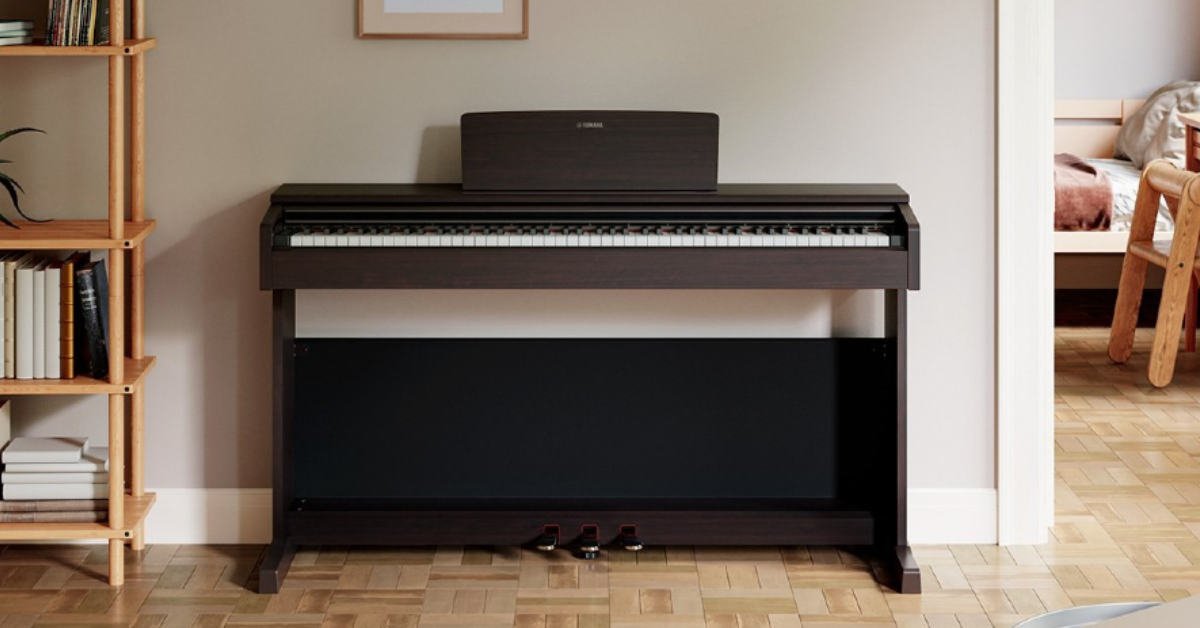
Why is touch sensitivity crucial for a digital piano for classical music?
Classical compositions often demand a dynamic range, from pianissimo (very soft) to fortissimo (very loud). A digital piano with touch sensitivity allows the pianist to express these dynamics, adding emotion and depth to their performance.
How important is polyphony in the best digital piano for an advanced pianist?
Extremely crucial. Polyphony refers to the number of notes a piano can play simultaneously. Complex classical compositions, especially when using the sustain pedal, can require a high polyphony count. Advanced pianists should aim for pianos with higher polyphony for unrestricted play.
Are built-in speakers in digital pianos good enough for classical music?
While many digital pianos come with decent built-in speakers, serious classical pianists often opt for external amplification to achieve a fuller and more resonant sound, especially in larger spaces.
Best Digital Piano for Classical Pianists: Conclusion
A journey through the world of digital pianos reveals a landscape full of innovation, authenticity and versatility. For a classical pianist, the intersection of traditional acoustic quality and modern technological advancements is of paramount importance. Whether you're a beginner or a seasoned maestro, finding the best digital piano is based on key factors such as authenticity of sound, touch response, and overall usability.
Models like the Yamaha YDP 145, Yamaha YDP144B Digital Piano and Roland RP107, among others, emphasize the importance of these attributes. Their technologies, from Yamaha's CFX Premium Grand Piano Voice to Roland's SuperNATURAL Piano, show how far these brands go to recreate the sound of an acoustic piano.
In fact, the ideal digital piano is not only about its technical characteristics, but also about the harmony it gives to its user.
Go Deeper:
